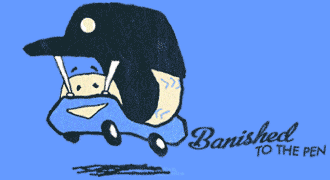
This post was originally published on Rockies Zingers, ESPN’s SweetSpot affiliate for the Colorado Rockies. There, Eric Garcia McKinley regularly features “What to Read” columns, which are syntheses about timely topics with links to recommended reading from around the web.
The Baseball Hall of Fame—as a museum and a process by which former players (and others) are enshrined—is more art than science, and more kitsch than authentic. This is something to keep in mind as you read about the Hall of Fame voting this month. You’ll read a lot about capricious voting, sanctimony, and cheating. Emotional and seemingly arbitrary voting is nothing new. Consider the two lines of these two second baseman who had nearly indistinguishable careers.

The first player, Lou Whitaker, can only get into the Hall of Fame by buying a ticket. In fact, he didn’t even make it beyond one ballot of eligibility because he couldn’t get a measly five percent of the vote. The second, Ryne Sandberg, was voted in to the Hall of Fame in his third year of eligibility. While inexplicable voting has always played a role in the Hall of Fame, voters today are strained in a way voters of the past have not been. Below, you’ll find links to compelling reads about the Hall of Fame. Be sure to read them now before you tire of such articles come January, as there isn’t likely to be much other baseball news over the next several weeks.
The Hall of Fame ballot is currently limited to ten votes. There are 34 names on the ballot, but each voter can only vote for ten. The origin of this rule is unclear and its function non-existent. Many voters want to vote for more than ten players, but they can’t. Two voters, Buster Olney of ESPN (read here, subscription required) and Lynn Henning of the Detroit News (read here for free), have decided that rather than voting for ten players, that they would boycott the ballot altogether. Their decision is part protest and part strategy. First, they want to draw attention to the asinine rule of ten in hopes of abolishing it altogether. Second, they reason that by not voting for anyone, which thereby lowers the voting pool by two, they are giving the players they could not vote for a better chance of gaining entry. Each writer would like to vote for more than ten players, but if they only voted for ten, then the ones left off would have a harder time getting to the 75 percent threshold. With two fewer voters, each vote cast is weighted more heavily. Their actions are not solutions, but concessions of defeat. I share their hope that their very public white flags will lead to reform.
Simple reform ideas abound. Derrick Goold of the St. Louis Post Dispatch, himself a voter, offers an easy solution. He calls for the elimination of the ten person ballot in favor of a binary survey about every player. Ballots would look like this: “Is Tim Raines a Hall of Famer? Yes or No.” Whoever receives 75 percent “yes” votes then earns enshrinement. Rather than unreforms that actually make it more difficult to vote, like changing eligibility from 15 years to ten, the Hall of Fame should go the simple route and eliminate the necessity of strategic ballots and practical dismissal of voting privilege.
For the past twelve years, Jay Jaffe has covered the Hall of Fame. Formerly of Baseball Prospectus, he now does so for Sports Illustrated. Jaffe is not yet a voter, but he is an authoritative voice on the Hall. His JAWS system, which provides a starting point for deciding whether or not a player is worthy of enshrinement, asks simple question of each candidate: how does he rank vis-à-vis other Hall of Fame player at his position in terms of career and peak? The system is built from baseball-reference’s Wins Above Replacement (bWAR). Taking into account one’s career bWAR, seven year peak bWAR, and a cumulative JAWS score provides a good idea of how well a player stacks up. Jaffe has been covering each player eligible this year—do yourself a favor and read all of them.
The most laudable component of Jaffe’s analysis and his system is that he embraces evolution. He tweaks his formula as the landscape changes, and he ultimately decides on his not yet officially meaningful thumbs up or thumbs down using a JAWS score as one aspect of a player profile. This is particularly evident with regard relief pitchers, which Hall of Fame voters don’t quite yet know what to do with. In this regard, read his profiles of Lee Smith and John Smoltz. His collection of articles for eligible starting pitchers, such as Pedro Martinez and Curt Schilling, prompt voters to evolve alongside the game—or, at least to evolve with a five year delay. Soon, voting in pitchers with fewer than 300 wins will be the norm because it has to be. The reason is not because pitchers are not as good, it’s because the game has changed. We might not see another 300 game winner for a long time, if ever. Someone, such as Martinez and his “scant” 219 wins, needs to break the dam. More importantly, voters need to see such figures as the new norm. Keep an eye out for Jaffe’s article on Rockies great Larry Walker on December 23. It might be the last time he’s eligible to be voted in.
And now a case study: David Borges of the Register Citizen, based on of Connecticut, is a first time Hall of Fame voter. He recently offered readers the names he voted for, as well as a brief rationale about his decisions. Borges is the ultimate art voter. He relies on emotion more than empiricism. Borges tells us that in addition to career statistics, he takes into account the emotional resonance each player had even more. He suggests, “if you really have to put a lot of thought into whether a player deserves to be in the Hall of Fame, he probably doesn’t belong there.” At first blush, this sounds reasonable. It’s the “slam-dunk” measure of worthiness, where tiresome persuasion for a player is actually contrary evidence. But the problem here is that Borges has a problem looking and thinking beyond himself. He writes that “Craig Biggio had over 3,000 hits, and I can’t remember a single one of them,” as if that were anything but a problem of his own making or an actual manifestation of “east coast bias.” We see this also when he states that he didn’t vote for Edgar Martinez because he was a DH—but he’ll vote for DH David Ortiz. David Borges covers the Boston Red Sox. On the whole, his ballot is not bad—Martinez, Schilling, Smoltz, Roger Clemens, Randy Johnson, Barry Bonds, and Mike Piazza. I might quibble with McGwire’s inclusion. And I would certainly contest the two empty slots. Even with a solid ballot, Borges’s vote shows that even abolishing the ten-person limitation might not do much for current day Lou Whitakers, such as Alan Trammel and Tim Raines.
At least his ballot includes Bonds and Clemens. Any ballot that omits either is indefensible. I say that as someone who doesn’t care whether or not they used steroids—they did. But that’s not my only perspective. Too many voters view the Hall of Fame as a monument rather than a museum. Monuments are multi-functional. They can celebrate, commemorate, or mourn. Museums are also multi-functional, but they different purposes. They exist to inform, elucidate, and narrate. Steroids are a part of story of baseball that the Hall of Fame exists to tell through its most impactful participants. As a museum, a Hall of Fame without Bonds and Clemens is a fragmented tale, whether or not one considers them ballplayers or ballplayers who cheated—heroes or villains.
Next post: Brian Daubach’s Long and Winding Road to the MajorsPrevious post: Time Capsule: Cards from the ’80s & ’90s (Part 2)




Leave a Reply